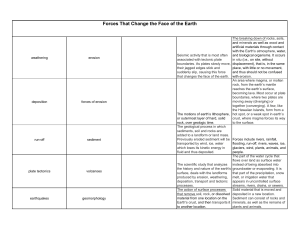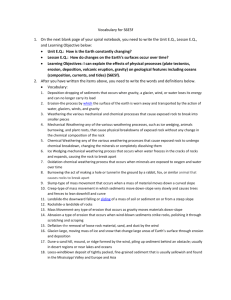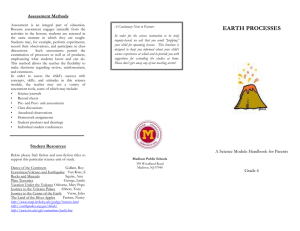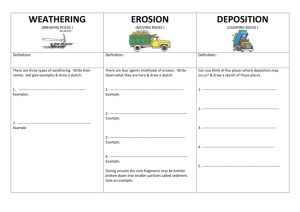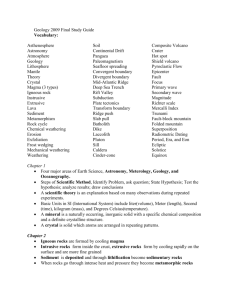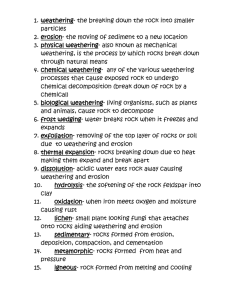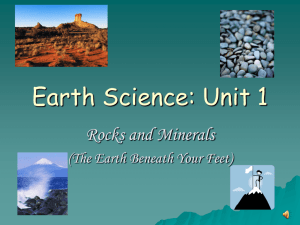Packet
advertisement
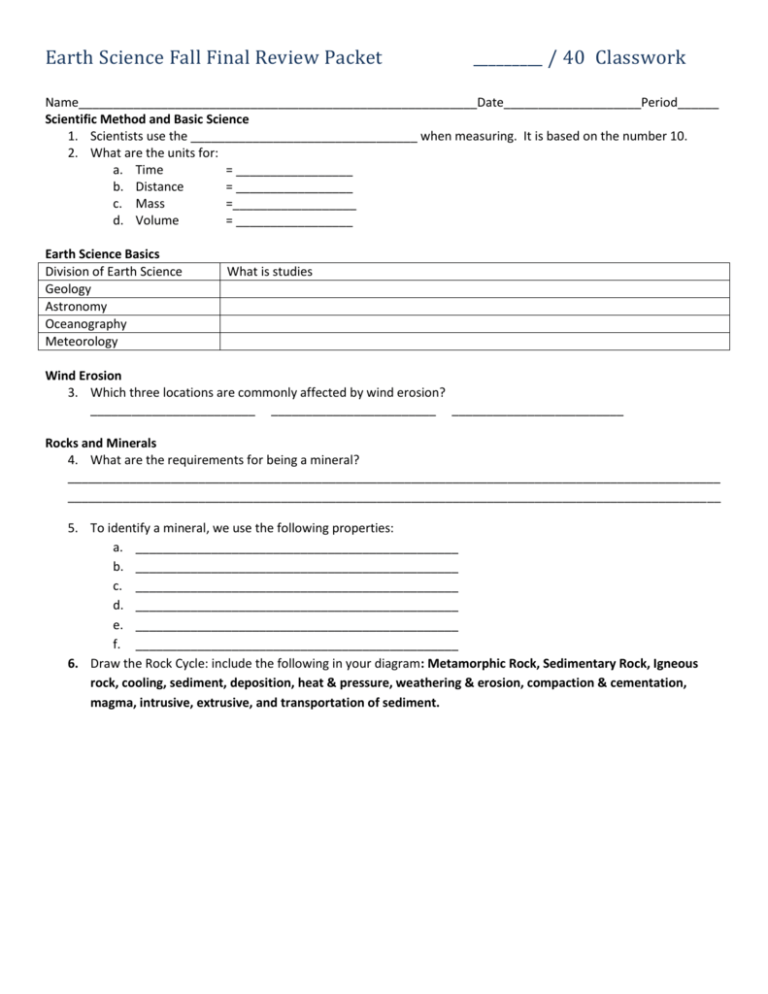
Earth Science Fall Final Review Packet _________ / 40 Classwork Name__________________________________________________________Date____________________Period______ Scientific Method and Basic Science 1. Scientists use the _________________________________ when measuring. It is based on the number 10. 2. What are the units for: a. Time = _________________ b. Distance = _________________ c. Mass =__________________ d. Volume = _________________ Earth Science Basics Division of Earth Science Geology Astronomy Oceanography Meteorology What is studies Wind Erosion 3. Which three locations are commonly affected by wind erosion? ________________________ ________________________ _________________________ Rocks and Minerals 4. What are the requirements for being a mineral? _______________________________________________________________________________________________ _______________________________________________________________________________________________ 5. To identify a mineral, we use the following properties: a. _______________________________________________ b. _______________________________________________ c. _______________________________________________ d. _______________________________________________ e. _______________________________________________ f. _______________________________________________ 6. Draw the Rock Cycle: include the following in your diagram: Metamorphic Rock, Sedimentary Rock, Igneous rock, cooling, sediment, deposition, heat & pressure, weathering & erosion, compaction & cementation, magma, intrusive, extrusive, and transportation of sediment. 7. Define and sketch what graded bedding is. ________________________________________________________ Sketch: 8. There are two categories of sedimentary rocks: a. ______________________________________ which is made up of __________________________ b. ______________________________________which forms from _____________________________ 9. What two things cause metamorphism: a. _______________________________________ b. _______________________________________ Volcanoes 10. If rocks form outside of a volcano it is called (instrusive/extrusive) ______________________________________ Which makes the crystals (small/large) _____________________________ . 11. If rocks form inside of a volcano it is called (instrusive/extrusive) _______________________________________ Which makes the crystals (small/large)_____________________________ . 12. What is the largest type of volcano? __________________________________ Dynamic Earth Continental Drift Description Seafloor Spreading Description Scientist Responsible: Evidence Provided: Scientist Responsible : Proof Provided Evidence Missing Chemical Weathering For each cause listed, say whether it is a cause of physical or chemical weathering and then explain how each factor will speed up or slow down weathering . Effect; does having more speed up or Physical, Chemical, or Both slow down weathering? Temperature Pressure Water Oxygen Acid Precipitation 13. What is mass movement? ___________________________________________________________________ 14. Think of the ocean floor; a. Where are the old rocks found? (ridge/trench) ______________________________ b. Where are the young rocks found? (ridge/trench) _______________________________ On the picture below, label the point bar and the cut bank. Where is the water the fastest? 15. If the river is moving fast, what size of sediment can It carry? (Coarse, medium, fine) ________________ 16. If the river is moving slow, how does that change What the river can carry? _____________________ __________________________________________ ___________________________________________ Plate Tectonics Type of Boundary Convergent Type of Tectonic Plates Involved Landforms / Effects Convergent Convergent Divergent Divergent Transform 17. Explain what causes tectonic plates to move. Use the terms magma and convection. ___________________________________________________________________________________________ ___________________________________________________________________________________________ ___________________________________________________________________________________________ 18. Look at the graph on the right, What happens to the speed of Seismic waves as they travel Deeper into the Earth? __________________________ __________________________ __________________________ __________________________ Earthquakes Label the diagram with the parts of an earthquake (fault plane, epicenter, focus, hanging wall, foot wall) 1 Volcanoes Type of Volcano Size and Shape Folds and Faults Type Anticline Syncline Monocline Normal Reverse Strike-Slip Type of Stress Picture Where do they occur? Violent or Quiet eruption
